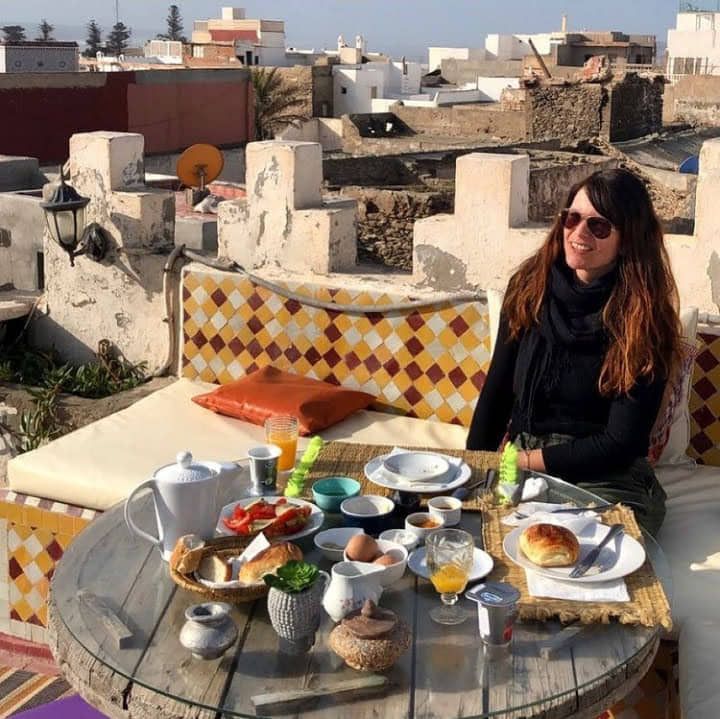
ciao sono Stephannie Emma insegnante di musica, cantante, fotografa e viaggiatrice. Ho 37 anni e sono single, amo fare di tutto e condividere con i miei studenti quindi ecco un po' del mio lavoro.Lo scopo dell'educazione è promuovere la musica come patrimonio culturale materiale e immateriale. Al termine del corso lo studente conoscerà la parola musicale, che sono gli elementi base della terminologia musicale, in grado di esprimere i concetti base della teoria e della pratica della musica occidentale. Come ascoltatore riflessivo, è in grado di orientarsi tra i grandi generi del repertorio della cultura musicale occidentale e il suo contesto nelle dinamiche storiche.
hi I am Stephannie Emma a music teacher, singer, photographer and traveler. I am 37 years old and single, I love to do everything and share with my students so here is a bit of my work.The purpose of education is to promote music as a tangible and intangible cultural heritage. At the end of the course, the student will know the musical word, which are the basic elements of musical terminology, able to express the basic concepts of Western music theory and practice. As a reflective listener, he or she is able to navigate the major genres of the repertoire of Western musical culture and its context in historical dynamics.

è rivolto a tutti gli studenti che vogliono conoscere il linguaggio della musica, indipendentemente da precedenti esperienze musicali. Il corso è aperto a tutti gli studenti del triennio di Cura dei Beni Culturali (L-1), in quanto si configura come una formazione propedeutica a qualsiasi tipo di conoscenza musicale ed è quindi rivolto ad un pubblico misto, composto sia da coloro che non pienamente consapevole del linguaggio musicale; e coloro che vogliono approfondire le proprie conoscenze attraverso un tour del "Patrimonio Musicale".
Gli obiettivi dell'educazione sono legati allo sviluppo della funzione etica, sociale e culturale dell'ascolto e dell'esecuzione della musica per ogni persona e per ogni società del passato e del presente.
L'obiettivo didattico della lezione è quello di educare un ascoltatore esperto, formato all'ascolto, alla descrizione e alla contestualizzazione di un'importante composizione del repertorio culturale della storia della musica europea utilizzando un linguaggio appropriato.
is aimed at all students who want to learn about the language of music, regardless of previous musical experience. The course is open to all students in the three-year Cultural Heritage Care (L-1) program, as it is configured as a preparatory training for any kind of musical knowledge and is therefore aimed at a mixed audience, consisting of both those who are not fully aware of the language of music; and those who want to deepen their knowledge through a tour of "Musical Heritage."
The goals of education are related to the development of the ethical, social and cultural function of listening to and performing music for every person and every society of the past and present.
The educational goal of the lesson is to educate an experienced listener, trained in listening to, describing and contextualizing an important composition from the cultural repertoire of European music history using appropriate language.

Il corso prevede: introduzione allo studio della musica come cultura; sulla storia e l'attualità della conoscenza musicale; al concetto di "Patrimonio Musicale", anche attraverso la conoscenza della loro promozione da parte dell'UNESCO come patrimonio culturale immateriale.
Porta gli studenti ad ascoltare, riconoscere e descrivere: alcune delle più importanti forme e generi musicali monodici, polifonici e omofonici in Europa dal XIV al XX secolo, quali: lai, reclami, ballad, virelais, ballad, rondeau, madrigale, coro, aria, sonata, concerto, sinfonia e poesia sinfonica.
In particolare, il corso "Parole musicali" fornirà agli studenti un breve ascolto e istruzioni su cosa significano melodia, ritmo, intervallo, scala, monodia e polifonia, tonalità, ritmo, genere, forma e sintassi. ; come ascoltare l'orchestra e come identificare le famiglie con gli strumenti musicali; qual è il punto e il punto e come può essere un valido strumento per l'ascoltatore riflessivo.
The course includes: introduction to the study of music as culture; on the history and relevance of musical knowledge; the concept of "Musical Heritage," including through knowledge of their promotion by UNESCO as intangible cultural heritage.
It leads students to listen to, recognize and describe: some of the most important monodic, polyphonic and homophonic musical forms and genres in Europe from the 14th to the 20th century, such as: lai, reclami, ballad, virelais, ballad, rondeau, madrigal, chorus, aria, sonata, concerto, symphony and symphonic poetry.
Specifically, the "Musical Words" course will provide students with brief listening and instruction on what melody, rhythm, interval, scale, monody and polyphony, tonality, rhythm, genre, form and syntax mean. ; how to listen to the orchestra and how to identify families with musical instruments; what is point and period and how it can be a valuable tool for the reflective listener.

L'insegnamento è accompagnato da ausili audiovisivi e informatici, dall'uso di film e soprattutto dall'ascolto.
Audiovisivo: Leonard Bernstein, Lezioni di musica classica; e guarda film sui generi musicali e sull'importanza della musica classica per l'istruzione.
L'istruzione prevede due conferenze, seminari didattici con gruppi target ed esercizi individuali che possono essere oggetto di valutazione dell'apprendimento precoce.
Teaching is accompanied by audiovisual and computer aids, the use of films, and especially listening.
Audiovisual: Leonard Bernstein, Lessons in Classical Music; and watch films on musical genres and the importance of classical music for education.
Instruction includes two lectures, instructional seminars with target groups, and individual exercises that can be subject to early learning assessment.

L'esame consiste in un colloquio orale, che sarà introdotto alla presenza degli studenti da una presentazione di esercizi individuali. Verifica relativa a:
-in primo luogo la capacità di orientarsi nelle principali strutture della musica: monodia e polifonia, intervallo e accordo, melodia, ritmo, armonia, strumenti e generi musicali;
- in secondo luogo, sarà verificato, dall'ascolto alla lettura del voto, il livello di competenza raggiunto nell'uso della terminologia appropriata per descrivere un testo musicale;
infine, mostrerà come l'ascolto attivo e critico della musica integri la conoscenza del contesto storico e culturale.
La valutazione finale seguirà i seguenti indicatori:
- dati insufficienti: mancanza di conoscenze di base e incapacità di interpretare correttamente gli argomenti trattati;
- livello appropriato: conoscenza di base; preferisce la traduzione corretta, ma è fatta con imprecisione terminologica e un po' di autonomia;
- buon grado: conoscenze intermedie; traduzione completamente corretta, ma non sempre accurata e autonoma;
- ottima laurea: conoscenza di alto livello; l'interpretazione dei problemi non è solo corretta, ma è fatta in modo autonomo e accurato. Incredibili abilità orali.
The examination consists of an oral interview, which will be introduced in the presence of students by a presentation of individual exercises. Verification related to:
-first, the ability to orient oneself in the main structures of music: monody and polyphony, interval and chord, melody, rhythm, harmony, instruments and musical genres;
- secondly, it will test, from listening to grade reading, the level of proficiency achieved in the use of appropriate terminology to describe a musical text;
finally, it will show how active and critical listening to music complements knowledge of the historical and cultural context.
Final assessment will follow the following indicators:
- insufficient data: lack of basic knowledge and inability to correctly interpret the topics covered;
- appropriate level: basic knowledge; prefers correct translation, but is done with terminological imprecision and some autonomy;
- good degree: intermediate knowledge; completely correct translation, but not always accurate and autonomous;
- excellent degree: high level knowledge; problem interpretation is not only correct, but is done independently and accurately. Incredible oral skills.
Congratulations, your post has been upvoted by @oscarps, from the @phototalent curation account
Welcome on blurt
Hi
We are blurttribe community, we welcome you to blurt, @blurttribe, you can share your ethnic, cultural, historical contents, feel free to express yourself and share them using the #blurttribe and stay away from plagiarism!!
Follow us to stay updated with our daily reality programs, contest and lots more.....
Blurt to the moon 🌕!!!!!